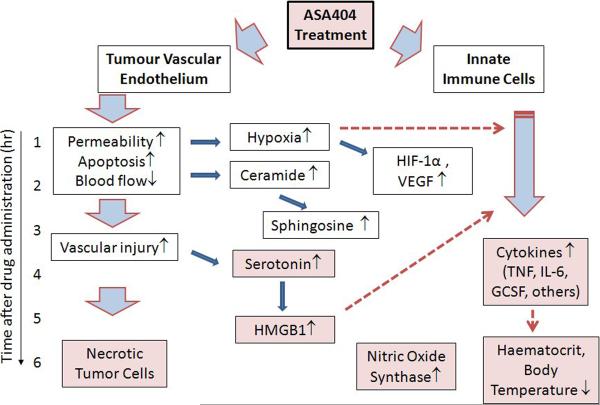Figure 4.
Scheme showing the approximate time course of ASA404 action in mice; the vertical axis indicates the approximate time scale and the shaded boxes represent the effects that contribute to the cascade of vascular disruption. ASA404 facilitates changes in both tumor endothelium and innate immune cells such as macrophages. Its direct effect is limited by a relatively short plasma half-life but leads in vascular endothelial cells to decreased blood flow, increased tumor hypoxia and vascular injury. Early effects on innate immune cells appear to involve increased ceramide production (BC Baguley, unpublished) and later effects involved the production of inflammatory cytokines and nitric oxide. The induction of hypoxia may potentiate responses of innate immune cells and can also induce the cytokine VEGF, which increases vascular permeability. Serotonin produced by platelets in response to vascular injury can potentiate inflammatory cytokine production, as can the appearance of necrotic tumor cells. Co-administration of cytotoxic drugs can also induce tumor cells to induce HMGB1 and other mediators that further stimulate host cytokine responses.

